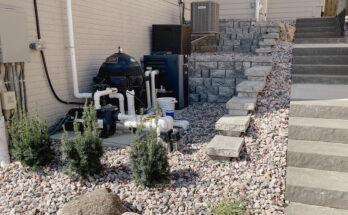Trees are vital components of our environment, providing shade, improving air quality, and enhancing the aesthetic appeal of properties. However, there are circumstances where tree removal becomes essential. Understanding the importance of tree removal is crucial for property safety and maintenance. In this blog, we will explore why tree removal is sometimes necessary and how it contributes to enhancing property safety.
- Preventing Property Damage
One of the primary reasons for tree removal is to prevent property damage. Trees, especially those that are old, diseased, or damaged, can pose significant risks. During storms or high winds, weak branches or entire trees can fall, causing extensive damage to homes, cars, and other structures. Even healthy trees can become hazardous if they grow too close to buildings or power lines. By removing these potentially dangerous trees, homeowners can prevent costly repairs and ensure the safety of their property.
- Ensuring Safety of Residents and Visitors
Safety is paramount, and overgrown or damaged trees can jeopardize the well-being of residents and visitors. Falling branches can cause severe injuries or even fatalities. Trees with structural weaknesses, such as cracks or splits in the trunk, are particularly dangerous. Regular inspections and timely removal of hazardous trees are necessary to protect everyone on the property from potential harm.
- Preventing Interference with Utilities
Trees growing too close to power lines, sewer systems, or underground utilities can cause significant issues. Overgrown branches can disrupt power lines, leading to power outages and potentially hazardous situations. Roots can infiltrate sewer systems, causing blockages and costly repairs. Removing trees that interfere with utilities ensures the smooth functioning of essential services and prevents dangerous situations.
- Maintaining Healthy Trees and Plants
Sometimes, tree removal is necessary to maintain the overall health of the landscape. Diseased or infested trees can spread infections to nearby healthy trees and plants. Removing such trees helps contain the spread of disease and protects the other vegetation in the area. Additionally, overcrowded landscapes can lead to competition for nutrients and sunlight, resulting in stunted growth. Removing certain trees can create space for healthier growth and a more balanced ecosystem.
- Improving Aesthetic Appeal
While trees add beauty to a property, not all trees contribute positively to its overall appearance. Trees that are improperly placed or have become overgrown can detract from the visual appeal of a landscape. Removing such trees allows for better landscaping opportunities, enhancing the property’s aesthetics. Moreover, clearing space for new, well-placed trees or other landscaping elements can significantly improve the curb appeal and value of the property.
- Preventing Pest Infestations
Dead or dying trees can become breeding grounds for pests such as termites, ants, and rodents. These pests can then migrate to nearby healthy trees, plants, and even homes, causing further damage. Removing dead or unhealthy trees reduces the risk of pest infestations and protects the property from potential harm caused by these unwelcome guests.
- Mitigating Fire Hazards
In regions prone to wildfires, tree removal can be a critical measure for fire prevention. Overgrown trees and vegetation can act as fuel for fires, increasing the risk of a wildfire spreading to homes and other structures. Removing excess vegetation and dead trees helps create a defensible space around properties, reducing the risk of fire damage and enhancing the safety of residents.
- Legal and Insurance Considerations
In some cases, tree removal is necessary to comply with local regulations and insurance requirements. Many municipalities have rules regarding tree maintenance, especially if trees pose a risk to public safety. Additionally, insurance companies may require homeowners to remove hazardous trees to ensure coverage. Failing to address dangerous trees can lead to legal liabilities and potential loss of insurance coverage.
- Promoting New Growth
Tree removal is not always about eliminating problematic trees; it can also be about promoting new growth. Removing older, less healthy trees can make way for new, vibrant growth. Planting new trees in place of removed ones can enhance the landscape, promote biodiversity, and ensure the long-term health of the property’s vegetation.
- Enhancing Property Value
Finally, maintaining a safe and visually appealing landscape can significantly enhance property value. Prospective buyers are more likely to be attracted to a property that is well-maintained and free of potential hazards. Removing problematic trees can be a worthwhile investment, increasing the property’s marketability and overall value.
Conclusion
Tree removal, when done responsibly and for the right reasons, is an essential aspect of property maintenance. It prevents property damage, ensures the safety of residents and visitors, and maintains the health and aesthetics of the landscape. While trees offer numerous benefits, understanding when and why to remove them is crucial for enhancing property safety and value. Regular inspections by certified arborists and timely removal of hazardous trees can help property owners maintain a safe, beautiful, and healthy environment.



